An easy recipe and guidelines for making homemade raw dog food that you can tweak as necessary to what best fits your dog.
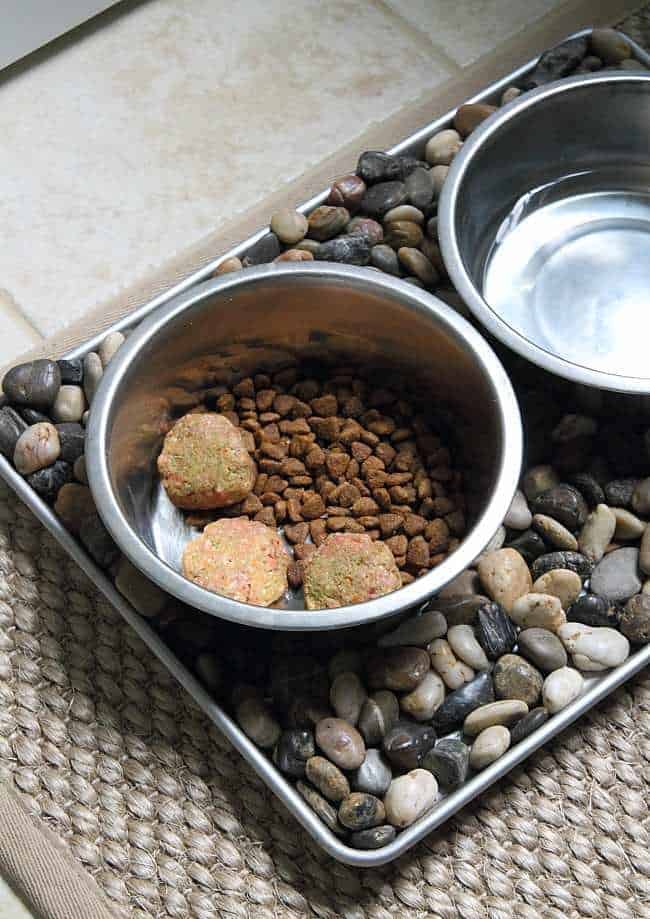
For as health conscious as I am about what kind of foods I put in my own body, I have to admit for the better part of six of her seven years, I pretty much fed Ginger the equivalent of fast food to humans.
Sure, it was the good fast food but after awhile, even Chick-Fil-A isn’t “healthy” any more if you know what I mean.
Of course, occasionally, I made her homemade pumpkin dog treats but more often than not her food was anything but homemade.
Then one day earlier this year it was like a switch got flipped.
The guy who sold us our water softener system was sitting in our kitchen and as we looked over models trying to figure out which one made the most sense, the sales guy and I started talking about dog food.
He explained how he starting feeding a raw food diet for his adult dogs and how their energy levels were through the roof (not that Ginger needs help in that department), their coats were shinier than ever and their teeth in great shape.

It made sense.
I completely buy into the same theories from a human perspective, why wouldn’t it be the same for dogs?
So, next trip to Petco, I was forking over some serious money (like 3 times the price of dry food) for frozen raw dog food patties and giving this whole thing a shot.
The first meal I gave her the homemade raw dog food, she came running back into the kitchen after licking the bowl clean as if she was begging for more.
As I was preparing the second meal and she saw me take the food out of the refrigerator, she just about lost it running back and forth between the kitchen and the laundry room (where we feed her), her legs moving faster than her body could on the wood floor running into chairs and walls like a lunatic.
It appeared she liked it.
At $25 for 3 pounds of food however, I knew immediately that wasn’t going to happen and I needed to start looking into some homemade dog food recipes.
Sorry, pup, I don’t eat out every day either.

So, I got to researching.
And it turns out, making your own raw dog food isn’t really that hard for dog owners.
It’s a bit disgusting as you see raw meat and organs swirl around in your food processor, but it’s not difficult by any means.
And yes, dogs can eat raw meat.
I think that’s the number one question I get when talk about this with people so I figured we’d get that out of the way first. Raw meals are not only a healthy choice for you dog, it’s what they were born to eat. Commercial dog food is something big industry made up in the middle of the last century along with the rise of human processed foods. Like in humans, this transition has lead to a slew of health issues for our pets and an obesity epidemic that matches that of their owners.
And if you’re wondering what else dogs can eat, check out my other site – What Can My Dog Eat?
Raw Dog Food Recipe Proportions (BARF diet)
The BARF diet stands for “biologically appropriate raw food diet”. Under this raw dog food diet, a dog’s diet should be high in protein, moderate in fat with a minimal amount of carbohydrates. When broken down into percentages, it will look something like this:
- 70% muscle meat with fat
- 10% raw edible bones (chicken feet can be great for this)
- 10% organs
- 5% fresh vegetables/fruits
- 5% dairy/supplements/nuts/seeds
Using those simple proportions, you can pretty much make up your own recipe from whatever you have on hand or find on sale at the store or.
Meat with fat: I will usually buy ground meat of some sort for this just because it’s easier than breaking down other cuts. Beef, chicken, pork, bison, gamey meats, etc. Muscle meat provides essential amino acids and vitamins for the dog. If your dog has any food allergies, it will likely be to a specific protein. Choose a protein type that works best for your dog based on their health conditions.
Bones: Raw edible bones are an important part of the BARF diet for essential nutrients like calcium and phosphorous.
Organs: The good news is organs are cheap. The bad news is organs are kind of gross. Nothing like some slimy chicken livers getting pulsed up in your food processor. Liver and kidneys are the two easiest to find in the grocery store. Liver is also the most nutrient dense organ there is providing fat-soluble vitamin A and other water-soluble vitamins.
Vegetables/fruits: Ginger happens to hate raw vegetables and fruit. She’s literally spit them out before or eaten around them if we’ve tried to feed her some in her bowl. So I choose sweet things here like apples, carrots and sweet potatoes that get processed real fine so she can’t tell. Avoid onions, grapes and raisins as they can cause kidney failure in dogs. It’s also a myth that vegetables provide no nutritional value to dogs. While they’re not necessary to support healthy dogs, they do provide added minerals and nutrients for better health overall.
Dairy/supplements: Whole eggs (shell and all) are a great source of calcium. I’ll also use some plain yogurt to help bind the patties. Supplement wise, ground flaxseed meal, olive oil and fish oil are great additions too. You can also choose to feed your dogs sardines for the healthy omega-3 benefits similar to olive oil.
How much raw food do I feed my dog?
This question has come up a lot in the comments so I figured I’d address it in the post.
The general guideline for adult dogs is to feed a balanced diet between 2-3% of their bodyweight. So, for a 50-pound dog that would be between 1 to 1.5 pounds of food per day.
Influencing factors on determining feed amount
- Activity Level
- Adjustments for weight gain or weight loss (the graphic in this post is helpful in that regard although discussing with your vet is probably best)
- Life Stage
Activity level
Be honest with this assessment. Is your individual dog mostly a lounger that hangs out inside all day with a few backyard jaunts or is it a truly active dog like a sporting breed that hunts, a working dog like a police K9 or your pal that goes hiking with you multiple times a week for hours on end?
Human tendency is to over emphasize/assess activity levels.
Adjustments for weight gain or weight loss
Simply put, does your dog need to lose weight? Gain weight? Maintain? The answer to those questions will help you figure out which end of that 2-3% spectrum you want to start with when starting a raw food diet.
Life stage
Notice I said adult dogs when referring to the 2-3% of body weight for food amounts. Puppies are an entirely different story as they’re quickly growing and need more calories to support that growth.
There are two approaches for feeding puppies:
- 2-3% of their expected adult weight (obviously easier to figure out with a pure bred dog)
- 5-6% of their current puppy weight – adjusting with the dog as it grows
Senior dogs shouldn’t have drastically different needs than a middle-aged dog unless of course, activity level impacts them.
Pregnant dogs are something you should speak to your vet or a veterinary nutritionist about in determining the best amount of raw food to support a healthy pregnancy.
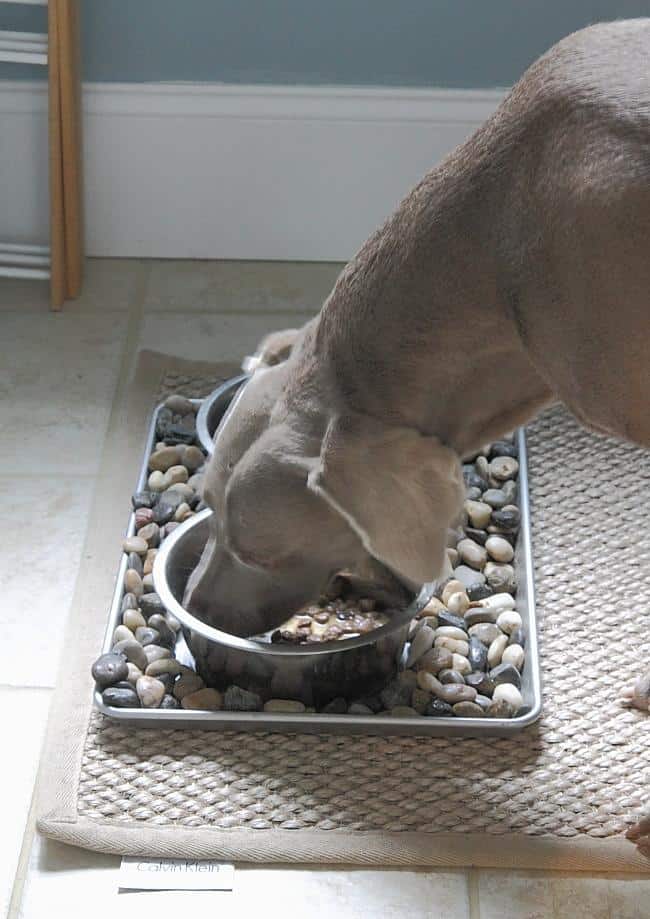
Making our dog homemade raw dog food has just become a part of the weekly routine now.
We do half of the homemade raw dog food recipe and half dry food which we upgraded as well to a grain-free feed with ingredients that make me comfortable when I read the back of the bag.
Because digestion rates of dry food (kibble) and raw dog food differ, we now feed one meal completely raw and one meal completely dry rather than mixing the two as seen in these pictures.
It’s a 30 minute weekly commitment that has made both her and I incredibly happy. Easy raw food dog recipes like this are a small price to pay to have complete control over the nutrition our dogs deserve.
Nothing can beat the look she gives me when she sees me reach into the fridge with her bowl in my other hand. And when I see her little stub waging ferociously from the lunatic excitement she has for every meal now, it’s a heartwarming feeling.
Knowing time is precious when you have a seven year old dog, something as simple as good food which I have the ability to control just isn’t even up for debate any more.
The Easiest Homemade Raw Dog Food Recipe
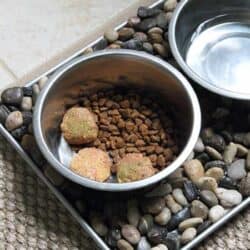
Ingredients
- 2 1/2 pounds ground beef
- 4 ounces chicken livers
- 1 carrot, chopped
- 1 small apple, cored
- 1/2 cup baby spinach
- 2 whole eggs, including shell
- 1/2 cup plain yogurt
- 1 tablespoon ground flaxseed
- 1 tablespoon olive oil
Instructions
- Add the carrot, apple and spinach to a food processor and process until finely chopped.
- Add the remaining ingredients except the ground beef and process again until well combined.
- Transfer the mixture into a large bowl. Add the ground beef and mix together with a spatula or your hands.
- Form into patties about the size of your palm and place on a parchment lined baking sheet.
- Freeze patties until solid, transfer to a storage container or plastic bag and keep frozen.
- Remove one day’s worth of patties from the freezer the night before and place in the refrigerator to thaw before serving.
Notes
Nutrition
Nutrition information is automatically calculated, so should only be used as an approximation.
Gina Matsoukas is an AP syndicated writer. She is the founder, photographer and recipe developer of Running to the Kitchen — a food website focused on providing healthy, wholesome recipes using fresh and seasonal ingredients. Her work has been featured in numerous media outlets both digital and print, including MSN, Huffington post, Buzzfeed, Women’s Health and Food Network.
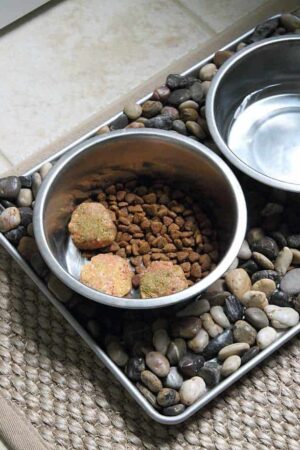

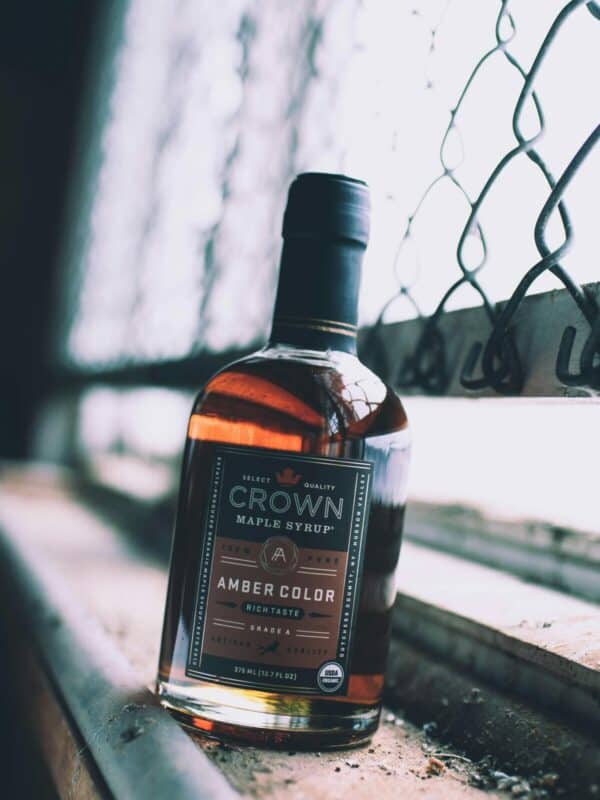
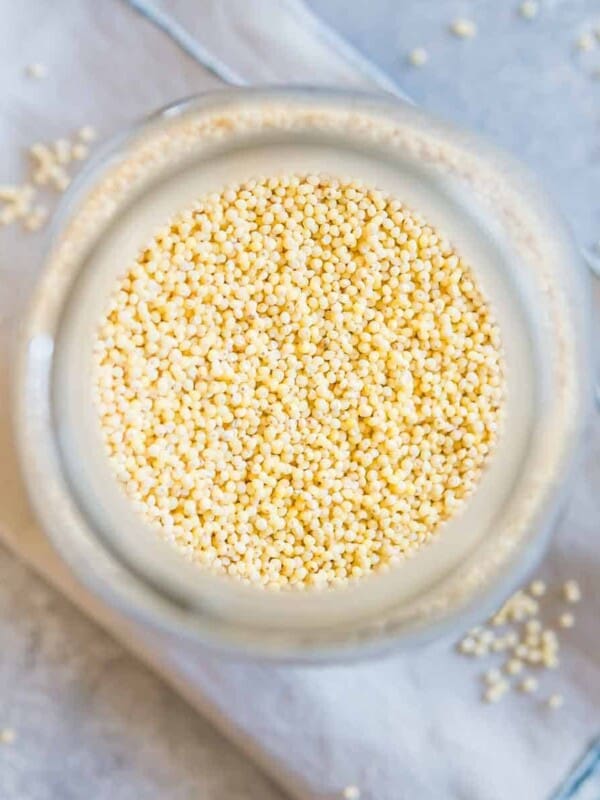
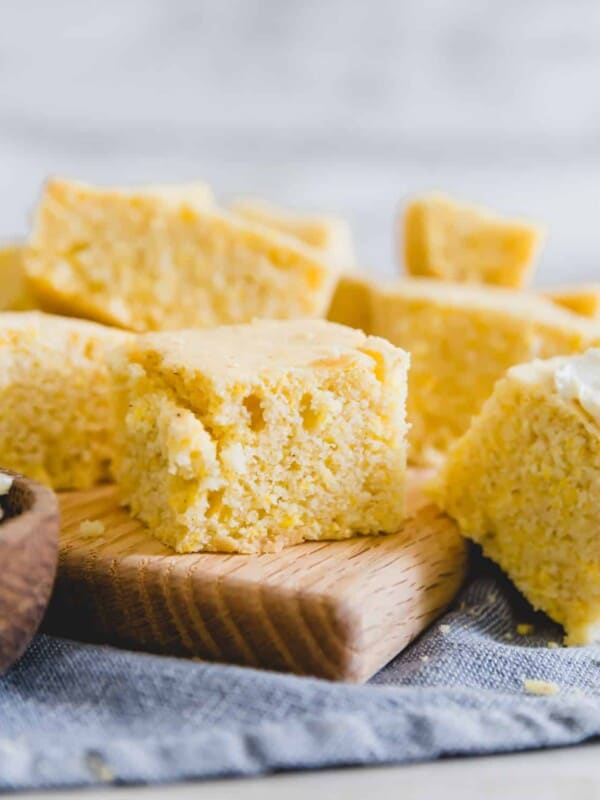





I’d love to try this recipe. I just want to make sure there is something taking place of the bone? I’ve heard egg shells do. Anything else?
I want to try raw for a fat dog feeding 1/4 cup of rx dry now twice à day but not loosing any weight.
Getting a pup this Christmas. Going to feed it raw. Thank you
I have a 13-year-old dog who has developed a real sensitive stomach, I’ve tried every high-priced dog food out there, and they all made her ill. This is the ONLY thing that has worked – thank you SO much!
So glad I finally made the jump to this raw homemade dog food. It’s actually cheaper than buying some of the ultra high end processed dog foods we were buying. And our dog farts at lot less now. Thank the lord.
Thank you for this alternative meal idea for my furry pal. I noticed my frenchie’s coat became lustrous and his dry patches of fur have started to heal.
My family recently adopted a puppy, and we were a little bit intimidated by the transition. We had no idea where to start with dog food, and this post really gave us all of the information we needed to make sure our puppy is eating healthy and happy.
Am I a bit thick…..
All this recipe… 2 1/2 meat etc….. is one serving – one meal.
Apart from one heck alot of work it works out very expensive.
Much as I love my two dogs I could not afford this every day.
@LYNN, If you scroll down and look at “1 Serving” broken down it is not actually one meal. It translates to 300 something grams of protein and 3000 something calories which is more than a days worth of food. So depending on the weight of your dog, you definitely get more than one meal out of this.
I know I’m a little late to the party, but dogs should eat 2-3% of their body weight every day. So if your dog is 20 lbs., she would eat .4 – .6 lbs of food per day. Not sure what the total weight of this receipe works out to. That would be good to know. If it were 10 lbs of food, it would last you approximately 20 days.
I started to transition my dog from kibble to raw with this recipe and at first he responded well but a few days into it he suddenly couldn’t digest properly and his stools are totally loose. What can I do to prevent this?
Can’t wait to try this, my dog has 29 allergies and it is impossible to feed him kibble. I been worried I may have to make a hard decision but now I have hope. One problem, he is allergic to flax, what is a good substitute for flax that isn’t
Pea
Tomato
Peanut
Rice
Soy
Flax
Oat
These are the 7 foods he is allergic too. I need to find a diet he can eat daily that doesn’t have any of these 7 ingredients in it. I need a substitute for flax, any ideas??? Please reach out if possible!
@Brittany, coconut oil is generally well tolerated by dogs but may increase weight over time-Idk if the flax was for the oils,fiber or another essential